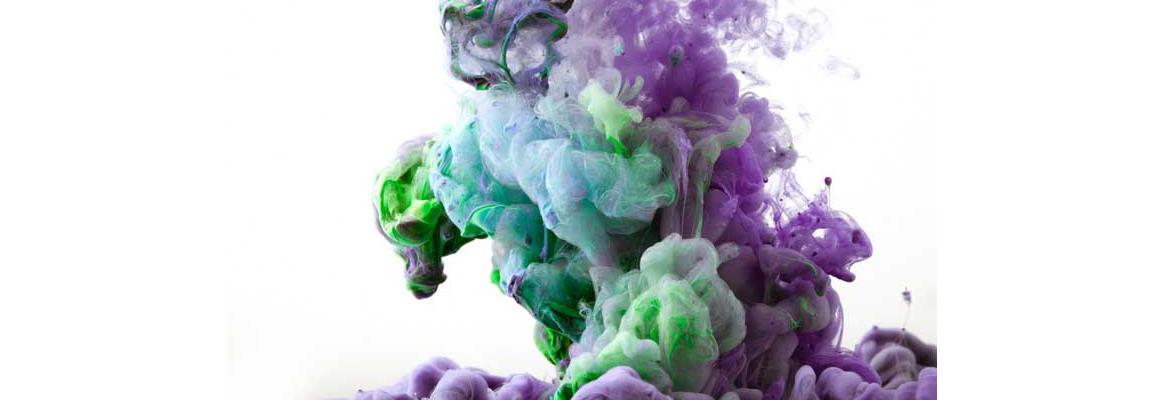Edward Menezes suggests a judicious approach towards advocating any specific type of colourant as natural dyes also have their disadvantages.
Looking good and feeling nice is a basic need for the social human. The colour and design of clothes we wear and the ambience of our home or office decor affect our mood and comfort factor. Colours are associated with emotions, festivals, seasons and passion towards life.
Colouring textiles is an age-old technique, essentially developed to make us appear more attractive, appealing and differentiating. The value addition in textiles is achieved through adequate colouration, which tends to improve product performance and satisfy consumer needs by enhancing aesthetic appeal.
Earlier, colourants were extracted from various abundantly available natural sources like plants, animals and minerals. Historical as well as archaeological evidence indicates that natural colours were used in dyeing, printing and painting by primitive communities throughout the world and the use of natural dyes on textile material has been practised for over many centuries. Colourants bind with the textile material through a chemical reaction or physical entrapment to achieve the desired extent of permanency and colour fastness. These are supplied in both solid and liquid form as powders, granules, solutions or dispersions.
With the advent of industrialisation, machinery development and need to meet growing demand from the global market, the requirement of mass production of textile for apparel and clothing was generated. This led to the innovation and development of synthetic dyestuffs and from 1856, after the synthesis of 'Mauve' by William Perkin, began a new era of colouration technology.
Since then, a fierce competition ensued among several European and Asian dyestuff manufacturers and resulted in the development of thousands of synthetic dyes and the manufacturing of millions of tonnes of these products.
Synthetic colourants are mostly based on fossil fuel and derived from crude oil. With a growing population and per capita usage of textiles, the consumption of synthetic colourants has increased proportionately. The huge production and consumption of such colourants has resulted in the depletion of fossil fuel and posed a threat to the environment owing to the related hazards of toxicity, bioaccumulation and pollution.
Under the growing global awareness about sustainable development, the negative impact of certain synthetic dyes due to their toxic and allergic reactions is a major cause of concern. For this reason, many countries have proactively put a ban on certain synthetic dyestuffs that generates hazardous by-products and carcinogenic intermediates.
Of late, terms like sustainability, ecological footprint, green technology, etc are being widely used and the new generation is becoming increasingly aggressive towards conserving nature. This has prompted international brands to promote the use of natural products and it is gradually becoming fashionable to use terms like 'going back to nature' or 'giving back to mother earth'.
The natural dyes as such are non-toxic and less allergenic compared to synthetic dyes. Moreover, it has been established that some of the natural colourants also possess medicinal value. This has prompted academic as well as industrial researchers to study, and if required, modify certain natural colourants. The biodegradability and eco-friendly aspect of such colourants have revived the interest of international brands and environment-conscious global consumers towards the use of textiles dyed with natural dyes.
Natural colourants are obtained from many sources and are usually categorised
A: Based on origin
-
Plant: From various parts like seeds, roots, trunks, barks, leaves, flowers and fruits; India has about 450 dye-yielding plants
-
Animal: From dry dead bodies of insects
- Minerals: From inorganic metal salts and metal oxides of the earth's crust
B: Based on chemical class
-
Indigoid: The most important and the oldest dyes of this class are the royal indigo and Tyrian purple, well known for their excellent lightfastness
- Anthraquinone: The most popular dyes of this class are madder, lac, kermes and cochineal
- Flavonoids: The largest set of dyes providing yellow colours; these include jackfruit, onion, hemp, kamala and sandalwood
- Carotenoids: The brightly coloured organic pigments based on the presence of long conjugated double bonds; include annatto, saffron, curcuma longa
- Napthoquinones: The most significant and widely used dye of this class is henna
- Quinonoids: These are abundantly available in nature; examples are sunflower, walnut, Indian madder and gaudich
C: Based on colour
-
Yellow: These constitute the largest category and hence, commercially the most cost-effective dyes: turmeric, goldenrod, marigold, parijataka, ustic, blackberry, weld, pomegranate rind, palas, hazel, saffron
- Red: These are the next most commonly obtained colourants; the popular ones are manjistha, kusumbar, safflower, madder, brazilwood, lac, cochineal and kerm
- Blue: These are derived from water lily, sunberry, indigo, woad, etc.
- Black: These are obtained from custard apple, harda, alder, etc.
Natural dyes were meant for their application on natural textile fibres like cotton, linen, jute, silk, wool, etc. However, many of these colourants can also be applied to synthetic fibres like nylon and polyester. The commonly used application methods involve exhaust dyeing in open width form or dip-dye, tie-n-dye methods to achieve certain dyeing and printing effects like bandhani, batik, kalamkari, patola, ikat and ajrakh. In India, the use and application of natural colouration has survived the onslaught of industrial synthetic colourants and rural artisans have preserved this traditional art form.
Natural dyes score over synthetic dyes based on the following features:
-
Eco-friendly: Derived from a natural source and are biodegradable
- User-friendly: Non-toxic and non-allergic, some have therapeutic value
- Nature-friendly: Reduced carbon footprint based on renewable source
- Waste utility: Sourced from waste materials of plants
- Labour-friendly: Cultivation, extraction and application provides employment opportunity to the people from the rural and suburban areas
- Shade achievability: Able to produce a wide gamut of shades from a single colour by simply altering dye application techniques
- Aesthetic ability: Shades produced are soft, lustrous and soothing to the human eye
Although there are many advantages associated with natural colourants in terms of ecological benefits, there are certain limitations that are equally important and need to be considered for adequate comparison with synthetic dyes.
The disadvantages and limitations of natural colourants are:
-
Availability: Inconsistent and varies depending on season, place or source
- Land use: Requires a large arable area for cultivation, reducing accessible land for food grains
- Water consumption: Needs a large amount of water during cultivation as well as subsequent colour extraction
- Less productivity: The actual colour obtained is a small fraction of the large material source
- High waste: The large amount of leftover mass poses a problem for disposal
- Quality control: Difficult to attain consistent quality and purity of extracted dyestuff as it varies with the source material
- Poor reproducibility: Difficult to re-attain the same shade during repeated applications due to the number of complexing factors
- Non-uniformity: Achieving levelness of dyeing is a challenge and needs critical control over various application parameters
- Low strength: Needs a large quantity of dyestuff owing to the limited tinctorial value
- Poor shade matching: Recipe prediction is difficult as the dye is a mixture of multiple moieties that vary based on extraction, isolation and purification process
- Inferior colour fastness: Significantly affected by external factors like sun, sweat water and air
- Toxicity and hazards: The application of natural colourants involves use of mordants, usually based on metal salts or tannins that cause effluent pollution and hazard to human and aquatic life
- High cost: Owing to low yield, tedious colour extraction process and the complicated dyeing application raises the cost
Considering all these benefits and shortfalls of natural and synthetic colourants in terms of ecology, economy, performance efficiency and end-use fastness parameters, it is advisable to adopt a judicious approach towards advocating any specific type of colourant keeping in mind that 'old is not necessarily gold'.
Demand for sustainable wet processing of textiles is growing rapidly; it essentially requires equal consciousness towards economic, social and environmental relevance of the processes and products used therein.
Stringent environmental regulations are imposed by many countries in response to the hazardous effluent generated during synthesis as well as the use of synthetic colourants. The toxic and allergic reactions associated with the synthetic dyes lead to the interest in the use of environment-friendly natural dyes. Therefore, it is imperative to understand the benefits as well as limitations of both the type of colourants and then judiciously consider the applicability of suitable products based on the requirement.










Comments